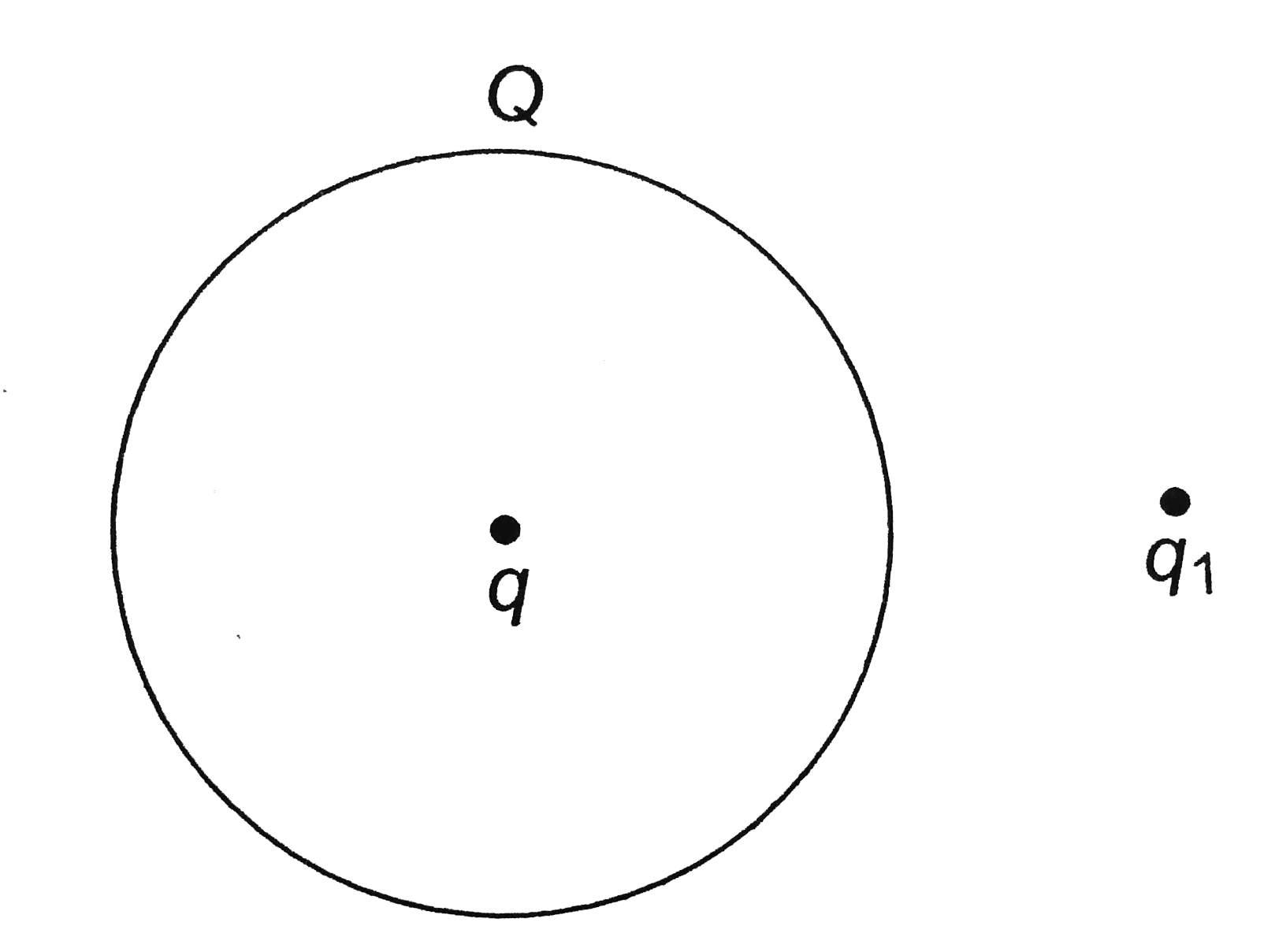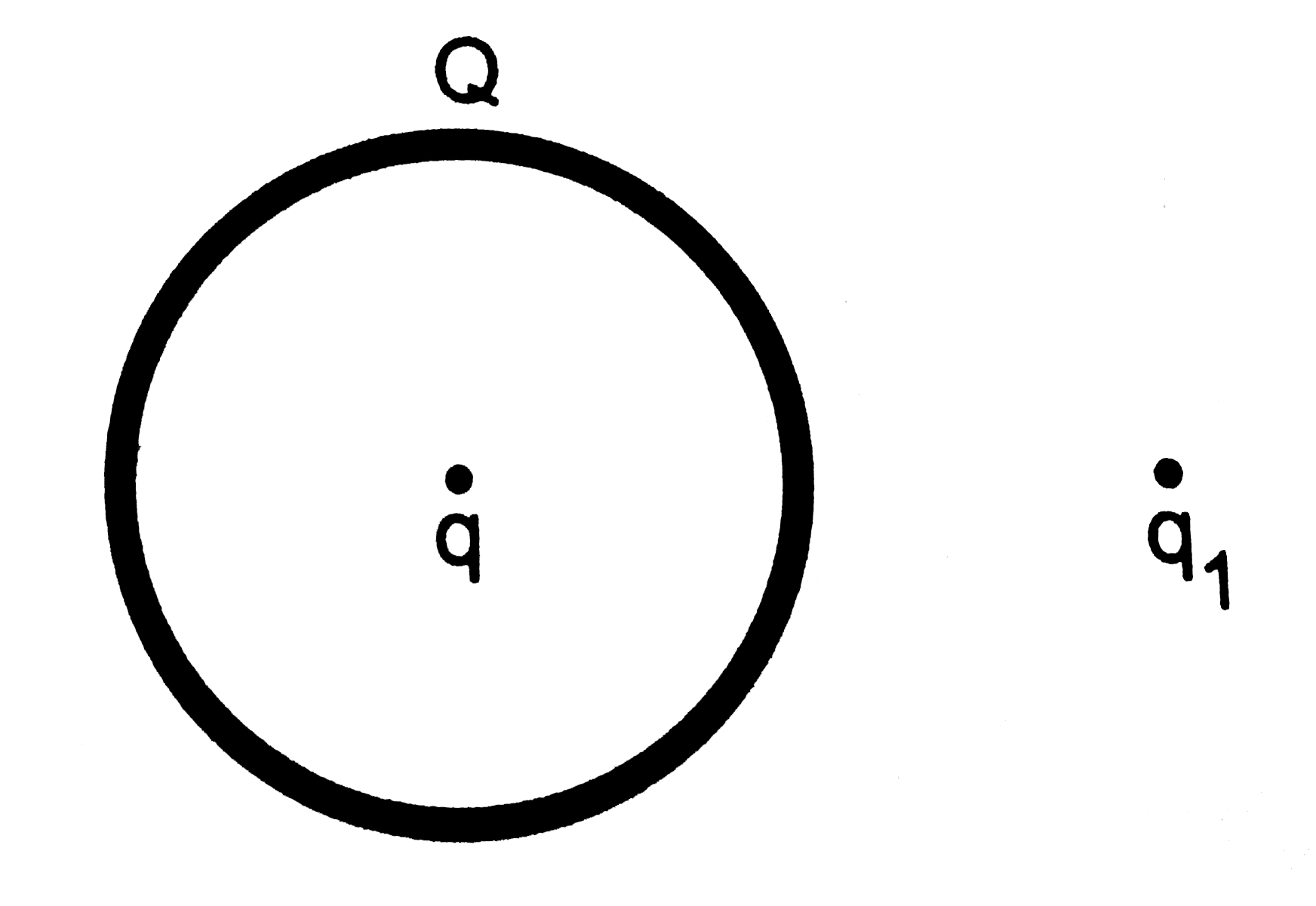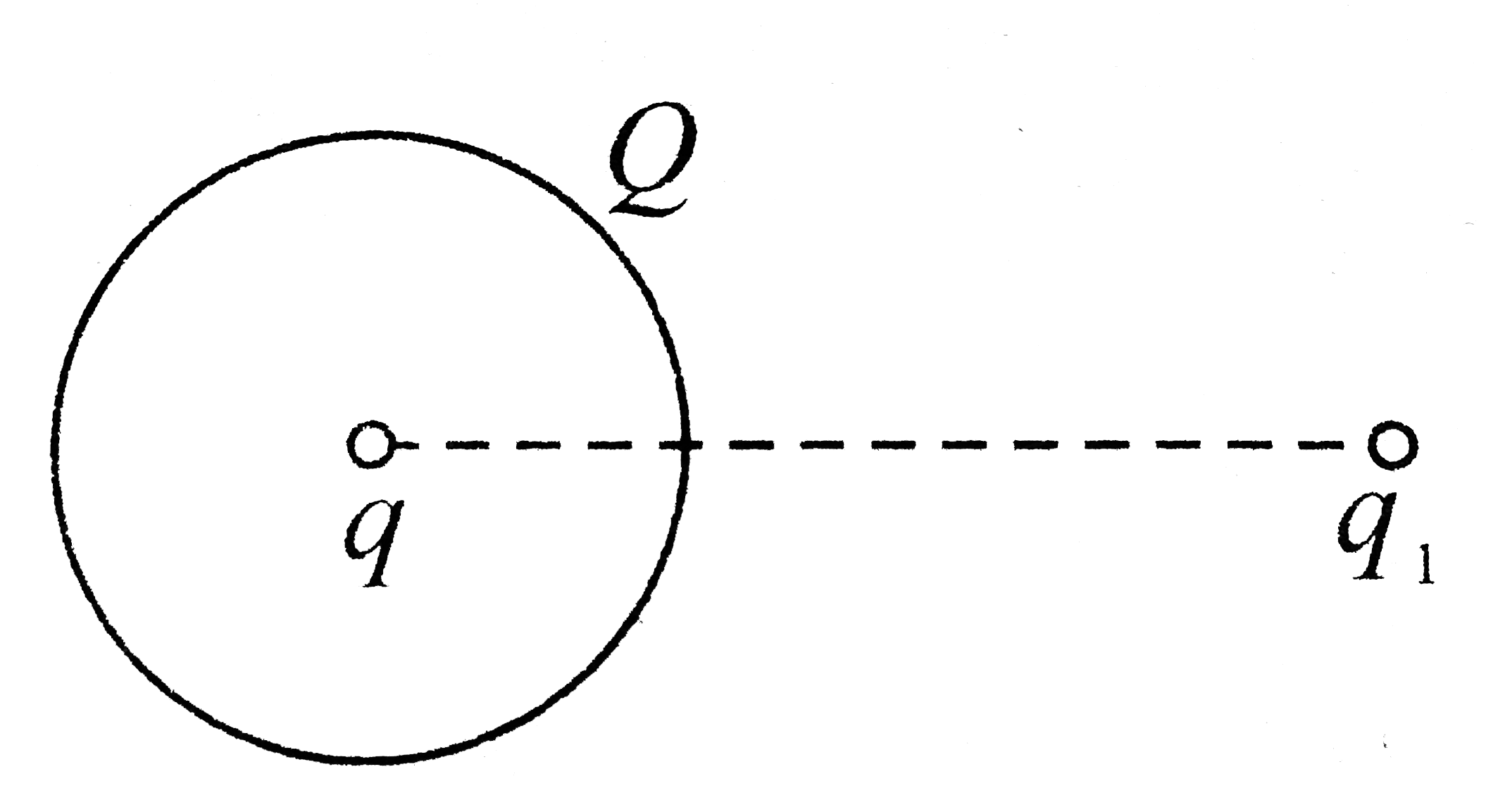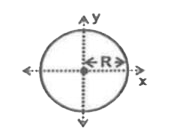In the above problem, the charges on different surfaces if a charge q is placed at the centre of the shell with all other conditions remaining the same.
The correct Answer is:A

Total charges on A+C is 3q. Therefore,
−q+q1−q2+q3=3q………i
VB=0
∴k(q1−q2R)+k(q2−q12R)+k(q3−q23R)=0………ii
VA=VC
∴k(q1−qR)+k(q2−q12R)+k(q3−q23R)
=k(q1−q3R+k(q2−q13R)+k(q3−q23R).....iii
in the above equations k=14πε0
solving above there equations we can finnd q1,q2 and q3.
Topper's Solved these Questions
- ELECTROSTATICSBOOK - DC PANDEYCHAPTER - ELECTROSTATICSEXERCISE - SUBJECTIVE_TYPE
6 Videos
- ELECTROSTATICSBOOK - DC PANDEYCHAPTER - ELECTROSTATICSEXERCISE - Check point 1.1
10 Videos
- ELECTROSTATICSBOOK - DC PANDEYCHAPTER - ELECTROSTATICSEXERCISE - Level 1 Objective
82 Videos
- ELECTROSTATIC POTENTIAL AND CAPACITORSBOOK - DC PANDEYCHAPTER - ELECTROSTATIC POTENTIAL AND CAPACITORSEXERCISE - (C) Chapter exercises
50 Videos
- GRAVITATIONBOOK - DC PANDEYCHAPTER - GRAVITATIONEXERCISE - All Questions
120 Videos
Similar Questions
A conducting spherical shell having inner radius a and outer radius b carries a net charge Q. If a point charge q is placed at the centre of this shell, then the surface charge density on the outer surface of the shell is given as:
View SolutionA spherical conducting shell of inner radius r1 and outer radius r2 has a charge Q.
(a) A charge q is placed at the centre of the shell. What is the surface charge density on the inner and outer surfaces of the shell ?
View Solution
Knowledge Check
A charge Q is placed at the centre of a spherical conducting shell. Choose the correct option.
AOnly −Q will appear on its inner surfaceBOnly +Q will appear on its outer surfaceCA charge −Q will appear on its surface and +Q on its outer surfaceDA charge +Q will appear on its inner surface and −Q on its outer surfaceA thin metallic spherical shell contains a charge Q on it. A point charge q is placed at the center of the shell and another charge q1 is placed outside it as shown in figure. All the three charges are positive

The force on the charge at the centre isAtowards leftBtowards rightCupwardDzeroA thin. Metallic spherical shell contains s charge Q on it. A point charge q is placed at the centre of the shell and another charge q1 is placed outside it as shown in figure (30-Q1). All the three charges are positive. The force on the charge at the centre is
 Atowards leftBtowards rightCupwardDzero.
Atowards leftBtowards rightCupwardDzero.
A thin metallic spherical shell contains a charge Q on it. A point charge q is placed at the center of the shell and another charge q1 is placed outside it as shown in the figure. All the three charges are positive. Find the force on the charge

a. at centre due to all charges.
b. at center due to shell.
View SolutionTwo concentric conducting shells A and B are of radii R and 2R. A charge +q is placed at the centre of the shells. Shell B is earthed and a charge q is given to shell A. Find the charge on outer surface of A and B.
View SolutionA spherical conducting shell of inner radius r1 and outer radius r2 has a charges 'Q' A charges 'q' is placed at the centre of the shell.
What is the surface charges density on the (i) inner surface (ii) outer surface of the shell?
(b) A spherical conducting shell of inner radius r1 and outer radius r2 has a charges 'Q' A charges 'q' is placed at the centre of the shell.
Write the expression for the electric field at a point x>r2 from the centre of the shell.
View SolutionA spherical conducting shell of inner radius r1 and outer radius r2 has a charge Q.
A charge q is placed at the centre of the shell. Find out the surface charge density on the inner and outer surface of the shell.
Is the electric field inside a cavity (with no charge ) zero. Independent of the fact wheather the shell is spherical or not ? Explain.
View SolutionIn a gravity free space, there is a large spherical metal shell which is given a charge +Q0. Inside the shell, a small particle having charge +q0 is placed at the centre of the shell. Finally, what will be the co-ordinates of the particle? (Given that all the collisions are perfectly inelastic.)

View Solution
